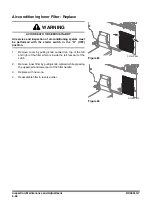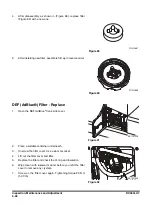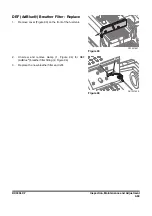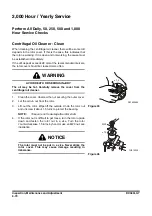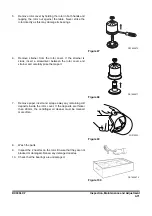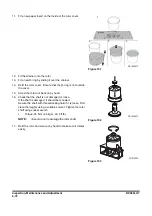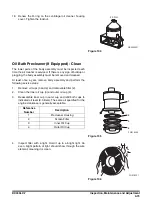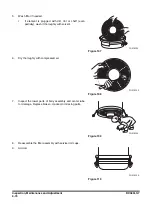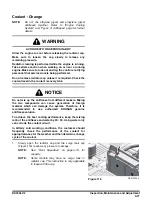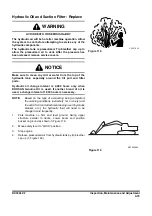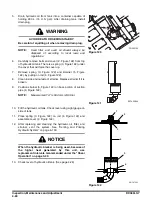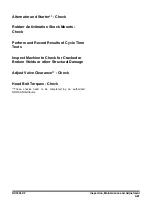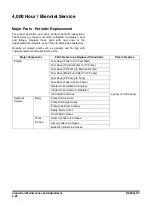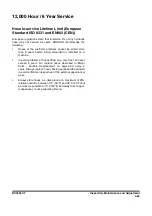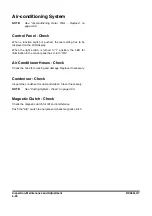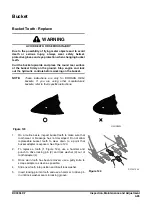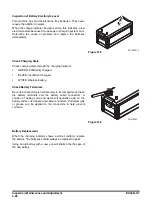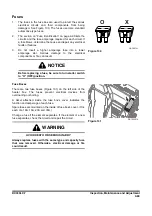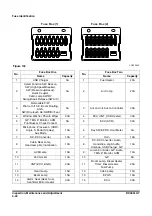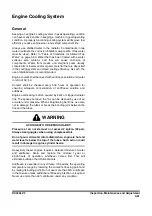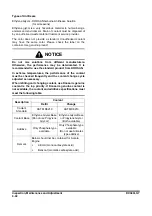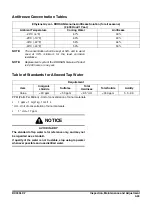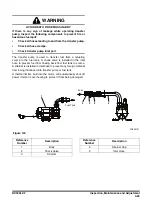
DX380LC-7
Inspection, Maintenance and Adjustment
4-80
5.
Drain hydraulic oil from tank into a container capable of
holding 280 L (74 U.S. gal.). After draining tank, install
drain plug.
NOTE:
Used filter and used oil should always be
disposed of according to local laws and
regulations.
6.
Carefully remove bolts and cover (2, Figure 122) from top
of hydraulic oil tank. There is a spring (3, Figure 122) under
the cover that will force the cover up.
7.
Remove spring (3, Figure 122) and strainer (5, Figure
122), by pulling on rod (4, Figure 122).
8.
Clean inside and outside of strainer. Replace strainer if it is
broken.
9.
Position strainer (5, Figure 122) on boss portion of suction
pipe (6, Figure 122).
NOTE:
Measurement "A" is 599 mm (23.58 in).
10. Fill the hydraulic oil tank. Check level using sight gauge on
side of tank.
11. Place spring (3, Figure 122) on rod (4, Figure 122) and
assemble cover (2, Figure 122).
12. After replacing and cleaning the hydraulic oil, filter, and
strainer, vent the system. See "Venting and Priming
Hydraulic System" on page 4-100.
13. Check level of hydraulic oil tank. (See page 4-26)
FG020195
Figure 120
WARNING
AVOID DEATH OR SERIOUS INJURY
Be careful of squirting oil when removing drain plug.
A
EX1400644
Figure 121
1
2
3
4
5
6
ARO1720L
Figure 122
NOTICE
When the hydraulic breaker is being used, because of
the higher heat generated by this unit, use
replacement intervals recommended under the "Shear
Operation" on page 3-49.

